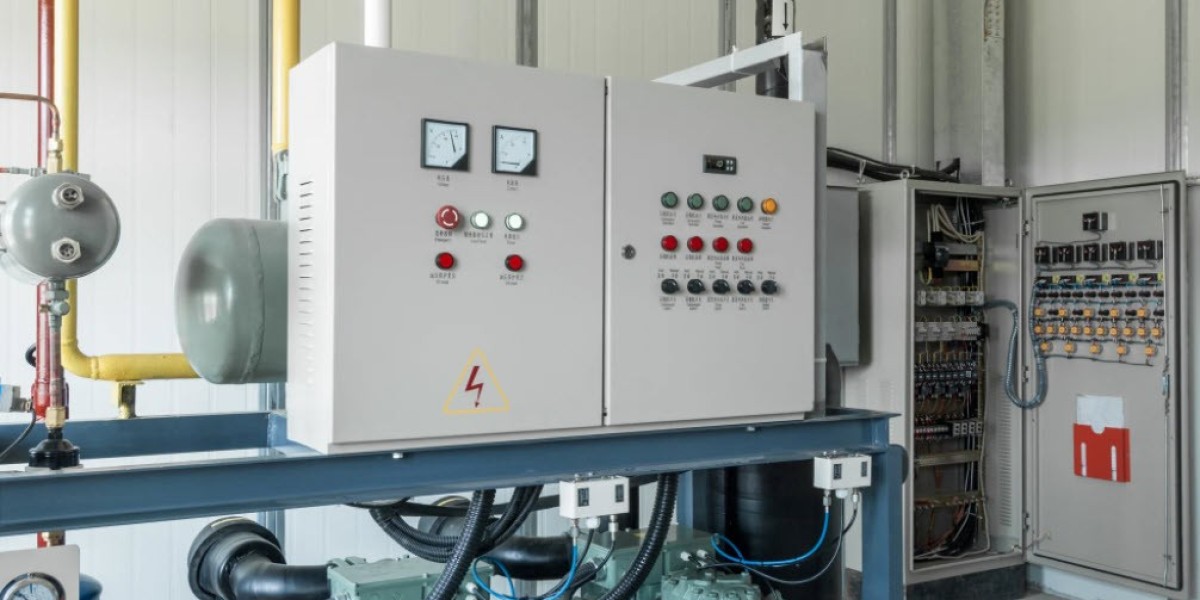PLC and VFD are two of the most essential components in modern industrial automation, working hand-in-hand to control processes, enhance efficiency, and ensure system reliability. As industries across the globe move toward smarter, data-driven operations, the integration of Programmable Logic Controllers (PLCs) and Variable Frequency Drives (VFDs) is driving a significant transformation in how equipment and systems are managed.
Whether you're operating a manufacturing plant, water treatment facility, or a food processing line, understanding how PLC and VFD systems collaborate can lead to improved productivity and lower operational costs.
What Are PLC and VFD?
A PLC (Programmable Logic Controller) is a digital computer used to automate industrial processes. It takes input from sensors and other devices, processes this data based on programmed logic, and sends commands to actuators or machinery.
A VFD (Variable Frequency Drive) is an electronic device used to control the speed and torque of an electric motor by varying the input frequency and voltage. VFDs are crucial in applications where motor speed must be adjusted to match specific process requirements.
Together, these technologies form a powerful automation duo: the PLC acts as the brain, making decisions based on inputs, while the VFD executes motor control actions as directed.
Benefits of Integrating PLC and VFD Systems
When used together, PLC and VFD systems offer numerous benefits:
Energy Efficiency: VFDs allow motors to run at optimal speeds, reducing energy consumption. PLCs can adjust these speeds based on process needs, avoiding waste.
Precision and Accuracy: PLCs provide accurate control logic, ensuring that VFDs respond precisely to changing process variables.
Reduced Wear and Tear: Soft starts and controlled stops managed through the VFD reduce mechanical stress on motors and equipment.
Improved System Monitoring: PLCs can log and transmit data from the VFD for diagnostics, performance tracking, and preventive maintenance.
Enhanced Safety: Emergency stop logic, fault detection, and overload protection ensure safer operations.
This synergy not only improves operational reliability but also leads to long-term savings in maintenance and energy costs.
Real-World Applications of PLC and VFD Integration
Industries worldwide rely on PLC and VFD integration for a wide variety of applications:
Pumps and Fans: Control flow rates and air volumes in HVAC, water treatment, and chemical systems.
Conveyors and Material Handling: Adjust speeds for different loads and conditions on production lines.
Mixers and Agitators: Fine-tune speeds to achieve desired mixing consistency in food and chemical processing.
CNC and Machine Tools: Optimize cutting speeds and feed rates for precision manufacturing.
In every case, this pairing increases flexibility and responsiveness to changing operational demands.
Custom PLC and VFD Solutions for Your Facility
When it comes to automation, one size doesn't fit all. Your system needs to be tailored to your specific equipment, production goals, and industry standards. That's where a trusted automation partner comes in.
If you're looking for expertly integrated PLC and VFD solutions, X-Automation LLC offers comprehensive automation services designed to elevate your operations. Their team specializes in designing, programming, and commissioning custom systems that combine the power of PLCs and VFDs to deliver reliable, efficient performance.
Anchor text example:
For scalable, energy-efficient automation systems, X-Automation LLC provides turnkey PLC and VFD integration tailored to your industrial requirements.
From hardware selection to programming and support, they help ensure that your automation system works seamlessly and meets all relevant safety and performance standards.
Key Considerations When Integrating PLCs and VFDs
To get the most from your PLC and VFD system, it's important to consider:
Communication Protocols: Ensure your PLC and VFD can communicate effectively via Modbus, Ethernet/IP, or Profibus.
Scalability: Choose systems that can grow with your operations.
Environment: Use appropriately rated enclosures for dust, moisture, or hazardous conditions.
Compliance: Ensure the system meets UL 508A, NEC, and local code requirements.
Working with experienced engineers ensures these critical aspects are addressed during system design.
The Future of PLC and VFD in Smart Manufacturing
As smart factories continue to emerge, the integration between PLC and VFD systems is becoming more advanced. Newer VFDs come with built-in intelligence and diagnostic capabilities, while PLCs offer greater processing power and connectivity for IIoT (Industrial Internet of Things) applications.
Real-time data sharing, predictive maintenance, and cloud connectivity are just a few features enhancing how these systems work together to support Industry 4.0 goals.
Final Thoughts
PLC and VFD technologies form the backbone of intelligent industrial control systems. Their integration leads to greater flexibility, reduced energy usage, safer operations, and better overall system performance. Whether you're updating an aging control system or planning a new automation project, these technologies should be central to your strategy.
To ensure seamless integration and lasting performance, partner with automation experts like X-Automation LLC. Their custom engineering solutions are built to meet the unique demands of your facility—helping you automate smarter and operate more efficiently.













